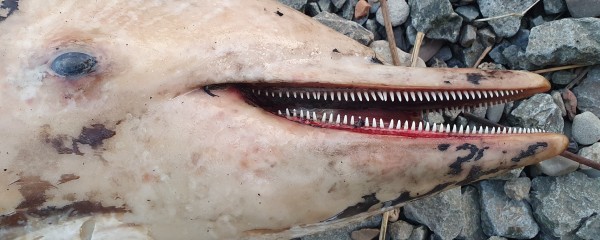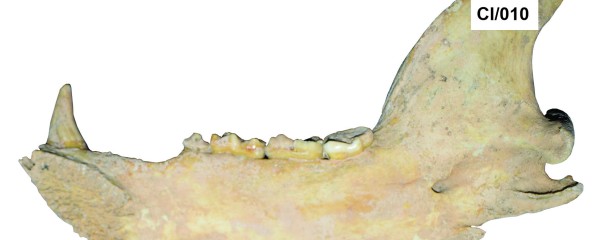Asteroid impact sulfur release less lethal in dinosaur extinction

An international team of scientists has demonstrated that the role of sulfur during the mass extinction that wiped out the non-avian dinosaurs has been overestimated. This suggests a milder "impact winter" than previously believed.
Previous studies have posited that the mass extinction that wiped the dinosaurs off the face of the Earth was caused by the release of large volumes of sulfur from rocks within the Chicxulub impact crater 66 million years ago. A new study by an international team led by Katerina Rodiouchkina (Luleå University of Technology Sweden, UGent and VUB in Belgium) questions this scenario. Using groundbreaking empirical measurements of sulfur with-in the related Cretaceous-Paleogene (K-Pg) boundary layer, the international team has demonstrated that the role of sulfur during the extinction has been overestimated.
Approximately 66 million years ago, the Chicxulub asteroid, estimated to be 10-15 kilometer in diameter, struck the Yucatán Peninsula (in current-day Mexico), creating a 200-kilometer-wide impact crater. This impact triggered a chain reaction of destructive events including a rapid climate change that eventually led to the extinction of the non-avian dinosaurs and in total about 75% of species on Earth. The main culprit is most likely the “impact winter”, which was caused by massive release of dust, soot, and sulfur into the atmosphere, leading to extreme cold, darkness, and a collapse in global photosynthesis, with lasting effects on ecosystems for years to decades after impact.
Most previous studies considered sulfur as the most crucial factor in driving the cooling and extinction after the impact event. However, estimates of the volume of sulfate aerosols released from the vaporization of the impacted rocks in Mexico have varied widely over two orders of magnitude from one study to another. This is because such estimates are largely based on uncertain parameters, such as the proportion of sulfur-bearing rocks at the impact location, the size, velocity, and impact angle of the asteroid, and the resulting shock pressures of sulfur-bearing minerals.

In the new study published in Nature Communications, Katarina Rodiouchkina and colleagues used sulfur concentrations and isotopic compositions from new drill cores of impact rocks within the crater region, combined with detailed chemical profiles across K-Pg boundary sediments around the world. This way, the authors were able to empirically estimate, for the first time, the total amount of sulfur released into the atmosphere due to the Chicxulub asteroid impact event.
A milder "impact winter" could have contributed to the survival of at least 25% of species on Earth following the event
"Instead of focusing on the impact event itself, we focused on the aftermath of the impact", explains chemist Katerina Rodiouchkina. "We first analyzed the sulfur fingerprint of the rocks within the crater region that were the source of sulfate aerosols released into the atmosphere. These sulfate aerosols distributed globally and were eventually deposited from the atmosphere back onto the Earth’s surface in the months to years after impact. The sulfur was deposited around the K-Pg boundary layer in sedimentary profiles all over the world. We used the corresponding change in the isotopic composition of sulfur to distinguish impact-related sulfur from natural sources and the total amount of sulfur released was calculated through mass balance."
The scientists revealed that a total of 67 ± 39 billion tons of sulfur were released, approximately five times less than previously estimated in numerical models. This suggests a milder "impact winter" than previously believed, leading to a less severe temperature decline and faster climate recovery, which could have contributed to the survival of at least 25% of species on Earth following the event.
While sulfur remains the primary driver of global cooling, it is important to note that a recent study by the Royal Observatory of Belgium and VUB suggests a massive plume of micrometer-sized fine dust may have played a crucial role in creating a two-year-long dark period, blocking photosynthesis and further compounding the environmental impacts.
To this study some Belgian universities and research institutes contributed: Ghent university (UGent), Vrije Universiteit Brussel (VUB), Royal Observatory of Belgium (ROB), Université Libre de Bruxelles (ULB), Katholieke Universiteit Leuven (KU Leuven), and the Royal Belgian Institute of Natural Sciences (RBINS). This article is based on the press release by the Luleå University of Technology Sweden and VUB.


